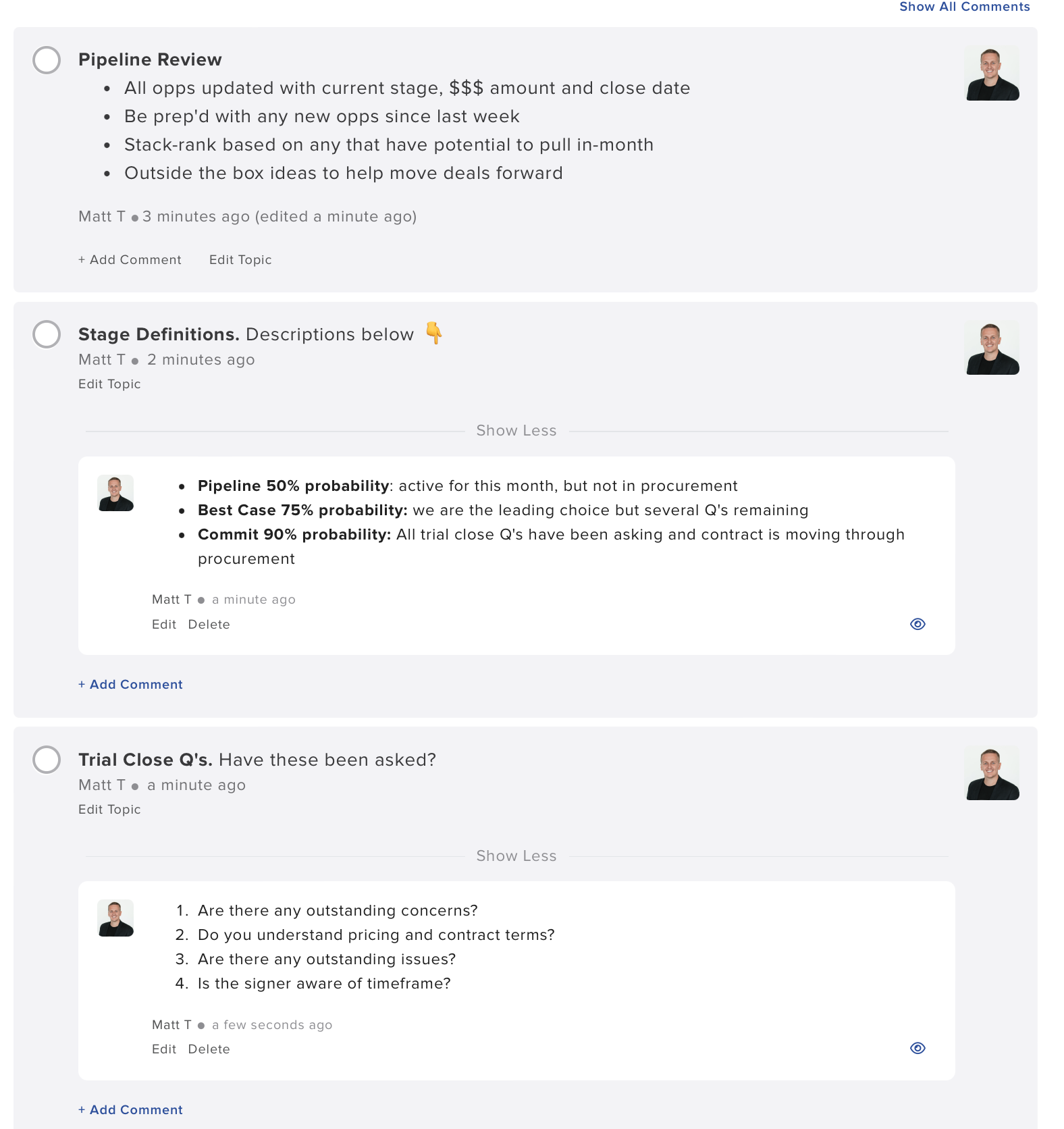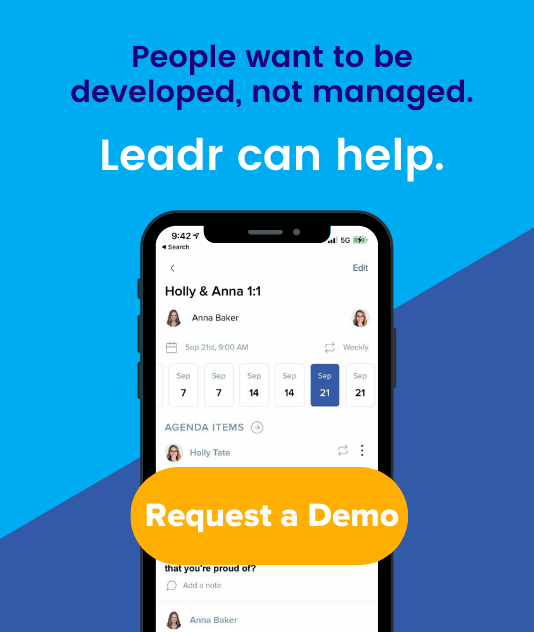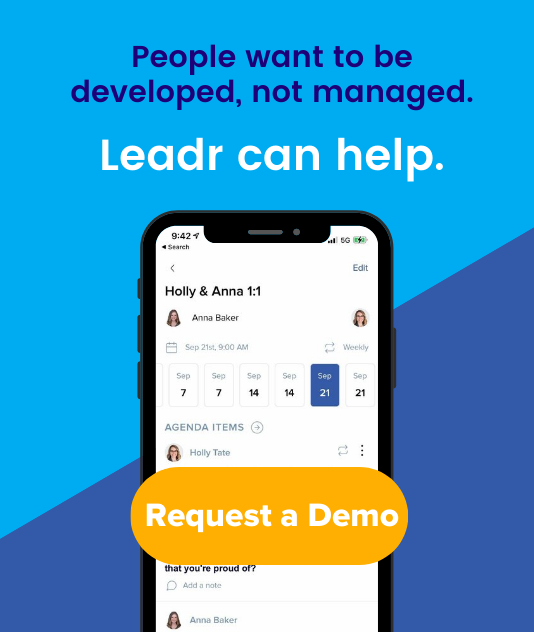Boost Your Sales Pipeline Meeting Effectiveness in 3 Easy Steps
In the fast-paced world of sales, where time is a precious commodity, it's not uncommon for pipeline meetings to be rescheduled or even canceled. However, neglecting these vital meetings can have detrimental effects on your organization.
When pipeline meetings are sidelined, executive teams lose valuable visibility into forecasting, and sales managers are left in the dark regarding their team's performance. The consequences? Friction between layers of leadership, poor business decisions, and missed revenue targets.
So what does an effective pipeline review look like?
1. Use a collaborative platform with recurring agenda items
One of the primary reasons pipeline review meetings often fall victim to rescheduling is the overwhelming prep work required by both managers and team members.
Fortunately, there's a solution: leverage a collaborative platform with recurring agenda items. Here's why.
1. With recurring agenda items, you alleviate the burden of repetitive preparation while ensuring alignment between all parties before the meeting even commences.
2. The use of a collaborative meeting agenda empowers sales leads and team members to contribute agenda items, share notes, and collaborate seamlessly. With a structured and consistent framework in place, everyone involved can prepare in advance, saving time and mental energy. This enables a more focused discussion during the meeting and promotes better decision-making.
3. It's also a great tool for performance tracking. Going into annual performance reviews or trying to reference a note from a past meeting? Collaborative meeting agendas keep historical data all in one place, saving you time sifting through various, disconnected platforms.
2. Set expectations around the meeting
Alignment is key when it comes to meeting effectiveness. Laying out exactly what you plan to discuss in your pipeline meeting ahead of time will help you jump straight into the agenda items when the time comes.
Below, there's a sample agenda from Leadr that you can adapt for your own pipeline meetings.
It clearly outlines what discussions will be covered, shows how each party can prep ahead of time for a more efficient meeting, and includes clear next steps following the meeting.

3. Ask the right questions
The heart of any successful pipeline review lies in asking the right questions in order to gather valuable insights, identify bottlenecks, and drive productive discussions.
Most everything you need to know can be determined by simply asking your team the following question each week:
Have you asked each of your prospects these questions?
- Are there any outstanding concerns with the product offering or the implementation?
- Do you understand our pricing and contract? (very important to explain the contract process, click to accept, very lightweight etc…. )
- Are there any other outstanding issues that you see that would keep us from moving forward this month?
- Is the signer aware of the timeframe of this month for contract execution?
- If you can answer all of these questions the deal can be forecasted as a Commit.
Maintaining Meeting Momentum
Consistency is key when it comes to sales success. Ramping up communication ensures leadership buy-in, visibility across the org chart, and a clear path forward for improving pipeline processes down the line.
But knowing this and practicing it are two different beasts.
Utilizing a tool to track and store everything from goals set to conversations held, activities in progress, and the results you’re hitting (or missing) can help save time and streamline communication so you can focus on hitting revenue targets.
Here’s how one company experienced a transformation in their sales performance after using Leadr for their sales pipeline discussions.
“Since bringing on Leadr, my team has made up a multimillion dollar deficit. The other sales team that hasn’t adopted Leadr yet, has seen their numbers go down. The only thing that has changed is Leadr and the way we are approaching these conversations. By adding in the care and development piece to my 1:1's, I find I have less time for the performance side, but it has helped get down to the main points I want to be emphasized. I have condensed the initiatives. Are we coaching our Account Executives to make the right call count? Are we providing value? Are we moving the business forward? These are the questions I am asking now and the results have been incredible.”
-Large Manufacturing Company
*Thank you to Peter Wooster, Leadr Board Member and Founder of Wooster Advisors for these powerful insights on becoming a more effective sales leader.
Share this
You May Also Like
These Related Stories

The Complicated Relationship Between Pay & Performance

Why Performance Improvement Plans (PiPs) Rarely Work






No Comments Yet
Let us know what you think